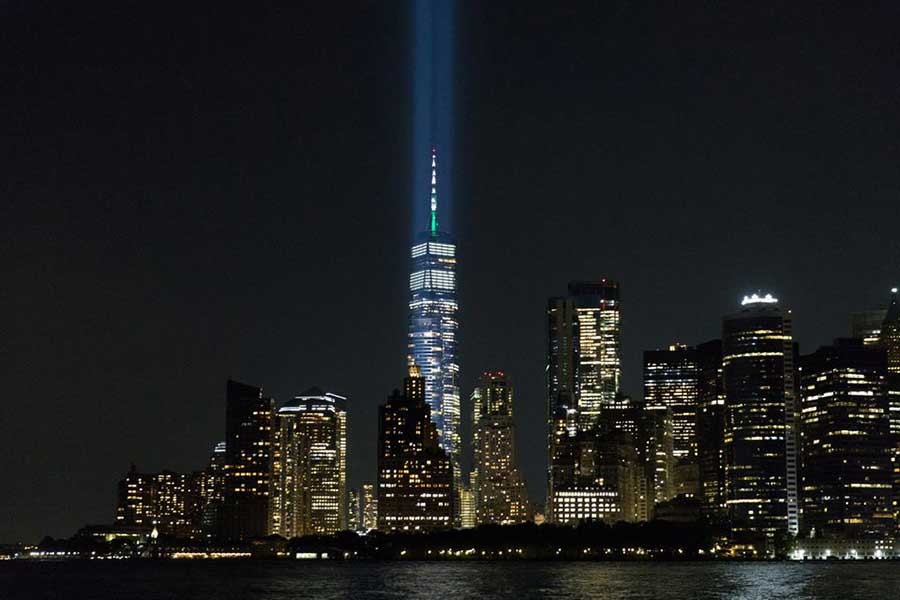Each anniversary of the 9/11 attacks generates debates on how to balance security with liberty in the United States (US). What is often lost in the conversation is the role that race plays in constraining civil liberties for religious minorities. Today, the targets are Muslims. A century ago, it was Jews and Catholics.
The racialisation script is the same. First, the religious minority is vilified in the media and among public officials as a disloyal fifth column. Then, the religion's followers are racialised as a threat to the (Anglo-Saxon Protestant) American way of life. Finally, the religion is expelled from the realm of religion by re-labelling it a dangerous political ideology.
For the past two decades, Americans have been subjected to a continuous stream of doomsday media portraying Muslims as terrorists. Few, if any, news stories describe how the millions of Muslim doctors, teachers, business owners, lawyers, and other working folks positively contribute to American society. Indeed, according to a 2018 University of Alabama study, from 2006 to 2015, terrorism committed by Muslims was covered 357 per cent more times than terrorism committed by non-Muslims in the US. Politicians have legitimised the media's vilification of Muslims by authorising massive surveillance, deportation, and prosecution of Muslim communities. Whether it was the Bush administration's special registration through the National Security Entry-Exit System (NSEERS) or the Obama administration's Countering Violent Extremism programme, both Republican and Democratic administrations have sent the same message to the American people: Muslims are a domestic security threat.
Donald Trump followed suit in a presidential campaign platform of xenophobia and Islamophobia. In March 2016, he declared: "I think Islam hates us … [T]here is a tremendous hatred and we have to be very vigilant and we have to be very careful and we can't allow people coming into this country who have this hatred of the United States and of people who are not Muslim." Shortly after walking into the White House in January 2017, Trump acted on his campaign promise, issuing the Muslim ban.
In a society that proclaims religious freedom as a fundamental value, support for discrimination against Muslims stands as an obvious contradiction. But if the religious minority is treated as a racial group, then their mistreatment falls within the long tradition of discrimination against Black Americans, Native Americans, and other racial minorities.
As I explain in my book The Racial Muslim: When Racism Quashes Religious Freedom, physical appearance is not the only basis on which racism operates. Religious identity can also be a trigger of discrimination. To be sure, a person's skin colour, hair texture, facial features, and national origin define where minority groups fit in socially constructed racial categories. But the entanglement of whiteness with (Protestant) Christianity in the US has historically racialised followers of non-Protestant sects and religions. The further away a group was from whiteness and Protestantism, the less privileges were afforded.
So when millions of Southern and Eastern European immigrants arrived on US soil between 1880 and 1924, they found themselves in a state of racial precarity. Although white by law due to their European origin, their Jewish and Catholic religious identities rendered them socially an "in-between race" - superior to Black people, Native Americans and Asians, but inferior to Northern European Protestants.
In the 1920s, a potent Klu Klux Klan condemned Catholics as a people whose parochial schools, foreign-born priests, and services in a foreign language threatened Anglo-Protestant national identity. Merely practising their religion attracted Protestants' suspicion that Catholics were secretly plotting to eliminate individual liberties.
White nativists alleged that the teachings of the Roman Catholic Church were inconsistent with liberalism's principles of self-governance and thus a threat to American democracy. These conspiracy theories mirror those of the anti-Shariah campaigns that emerged after 9/11 targeting Muslims.
Overt anti-Semitism was also as mainstream then as Islamophobia is today. The media in the early 1900s described Jews as clannish, separatist, parasitic, pushy, dishonest, and agents of Bolshevism. When the Jewish population increased to more than three million in 1920 (mostly from Eastern Europe), white Protestant nativists deployed theologically based racism in claiming Jews were Judaised Mongols and Khazars of Turkish origin.
Hyperbolic depictions in the media of Jews with bulging eyes, protruding sensual lips, hooked noses, and animal-like jaws were common in the first half of the 20th century. By 1938, the racialisation of Jews led to nearly 54 per cent of Americans believing Jews were to blame for their persecution in Europe. Fast forward eight decades to 2017 - 50 per cent of Americans believe Islam is not part of mainstream America and only 48 per cent expressed warm feelings towards Muslims, according to a Pew Research poll.
Muslims' racialised identity stands in stark contrast to Americans' association of Christianity with peace, civilisation, charity, and forgiveness, notwithstanding a historical record of violence in its name. That Christianity is treated as normal and Islam as dangerous arises from the third factor legitimising systemic discrimination against Muslims: the re-categorisation of Islam from a divinely inspired religion to a violent political ideology.
In this annual round of debates on security and liberty, let us finally confront how the racialisation of religion harms Muslims specifically and erodes religious freedom more generally. Only then can we finally put an end to American Islamophobia.
The writer is Professor of law and Chancellor's Social Justice Scholar at Rutgers Law School. The piece is excerpted from www.aljazeera.com


